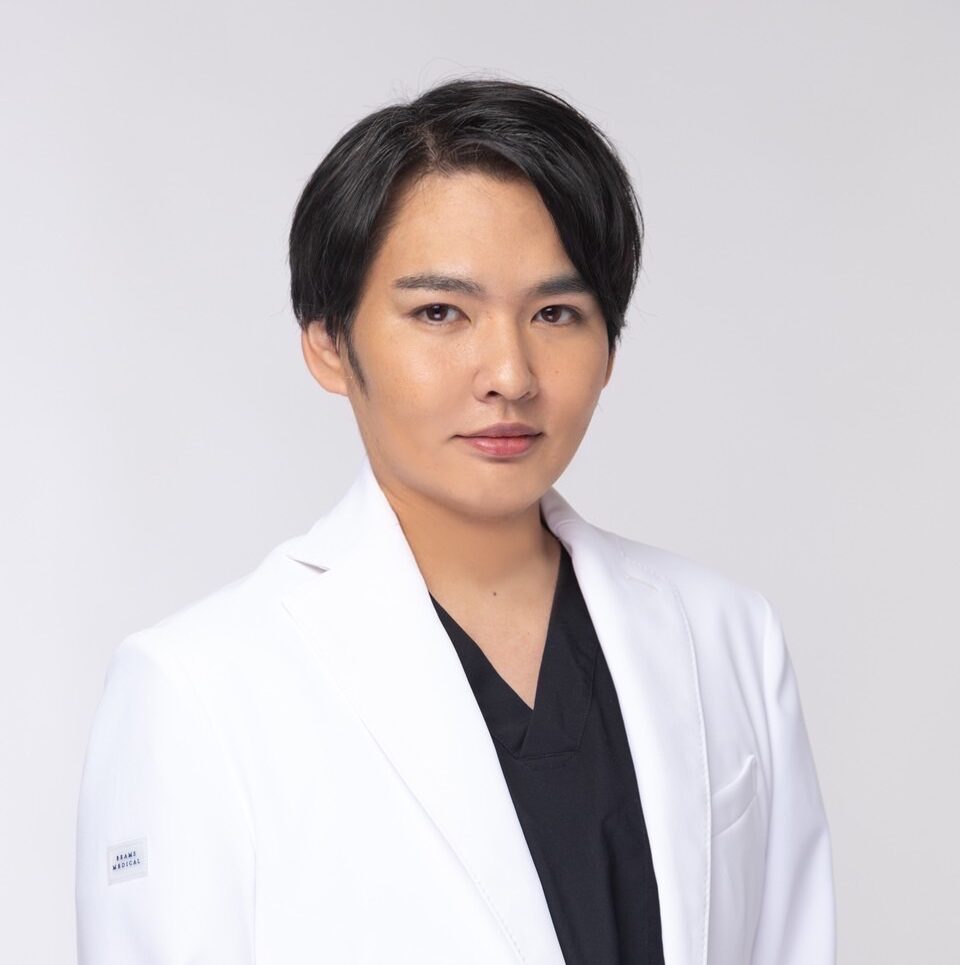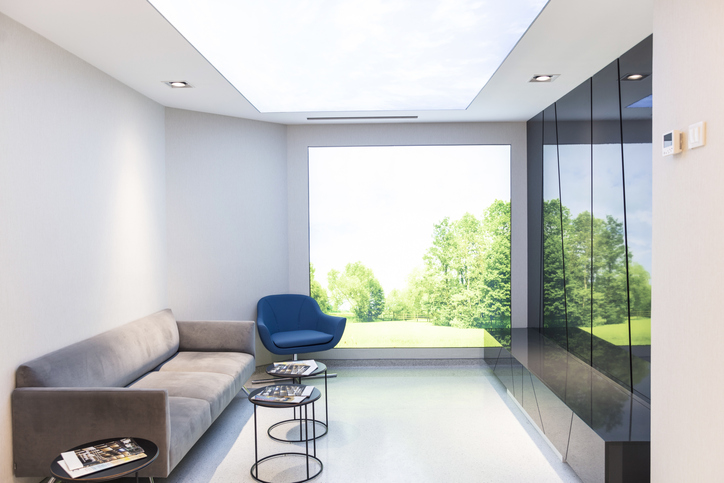Do you sigh every time you look in the mirror, feeling that your upper eyelids are heavy and sagging? The eyeliner you used to be able to draw beautifully may now look clumpy, or the width of the double fold may be narrower, hiding your eye shadow. In addition to the change in appearance, many people find it difficult to open their eyes in the evening, and many suffer from headaches and stiff shoulders due to the habit of unconsciously lifting their eyebrows to look at things.
Perhaps that problem can be solved with a "sub-brow incision". A hypobrow incision is a procedure that lifts sagging skin naturally by removing excess skin along the line under your own eyebrows. However, when it comes time to look into it, you may wonder, "Am I really the right person for a sub-brow incision?" It is natural to feel anxious about having an incision and not want to regret it.
Here, we will answer your questions and concerns from an expert's point of view. From a self-checklist to a detailed comparison with other procedures, to scarring, downtime, and all the risks that everyone is concerned about, we will explain everything in depth. By the time you finish reading, you should be able to confidently decide if a hypobrow incision is the best option for you.

Graduated from the Faculty of Medicine, National Kumamoto University. After serving as the director of major beauty clinics in Japan, etc., he opened Aladdin Aesthetic Clinic in 2023. He is a professional in aesthetic medicine with a doctorate in anti-aging research and many years of experience. With the motto of "Toward the realization of cosmetic medicine without lies," he aims to be the "Only One" together with his patients.
- Eight characteristics of people who are suitable for a hypobrow incision
- Characteristic 1|The upper eyelid sags and the width of the double fold narrows.
- Characteristic 2|Small eyes, sleepy or grumpy appearance
- Characteristic 3|Heavy eyelids and tired eyes in the evening
- Characteristic 4|Eyeliner is difficult to draw and eye shadow is hidden.
- Characteristic 5|The eyelids are originally thick and swollen.
- Characteristic 6|There is a double line, but it is not clear because the skin covers it.
- Characteristic 7|The line does not come out beautifully due to the thickness of the eyelid, although double-layered surgery was performed.
- Characteristic 8|I want to refine only the eye area without changing the overall impression of the face.
- Why do you recommend a sub-brow incision for different problems?
- Which eye area procedure is best for you? How does a sub-brow incision differ from other eye area procedures?
- All about the scarring, downtime, and risks of a submental incision!
- summary
Eight characteristics of people who are suitable for a hypobrow incision
With all the information out there, many of you may be wondering, "Is a sub-brow incision really the best choice for me?" Many of you may be wondering, "Is a submental incision really the best choice for me? Here, we have summarized eight specific characteristics of people who are suited for a sub-brow incision in order to provide you with a conclusion first. Please check them one by one while thinking of your own current condition and your longstanding problems.
This is more than just a list. We address a wide range of concerns, from generations who are experiencing changes due to aging to younger generations who are looking to refine the shape of their natural eyes. If any one item strongly applies to you, it may be a sign that your life is about to change.
The impression of your face changes little by little as you age. The area around the eyes, in particular, is a delicate part that affects the appearance of age and fatigue more than you may realize. If you recognize any of the following signs, it may be a good time to consider a submental incision.
Characteristic 1|The upper eyelid sags and the width of the double fold narrows.
When I was younger, I had a sharp double-layered eyelid, but before I knew it, I had a double-layered eyelid," or "Even if I draw eyeliner, it is almost completely hidden when I open my eyes. The main cause of these changes is that the skin of the upper eyelid stretches with age, loses its elasticity, and droops.
The sub-brow incision precisely removes this excess loose skin just below the eyebrows. The skin covering the brow is then lifted, and the beautiful double-edged line that you originally had is revealed as clearly as it was in the past.
Characteristic 2|Small eyes, sleepy or grumpy appearance
You don't mean it, but people around you may ask, "Are you tired? Or, sometimes, "Are you mad at me? Are you finding that your eyes are increasingly being misinterpreted as being "angry"? This may be due to the sagging eyelid skin covering the dark eye, making the opening of the eye itself look poor.
A sub-brow incision physically lightens the eyelid and widens the field of vision, allowing the black eye to be seen more clearly. The result is a revival of the bright, intent eye, giving a youthful and vivacious impression.
Characteristic 3|Heavy eyelids and tired eyes in the evening
Today, when desk work and prolonged use of smartphones have become a daily routine, many people suffer from eyestrain. However, this fatigue may not be caused by mere overuse of the eyes. When the skin of the upper eyelid is sagging, we unconsciously use our forehead muscles (frontalis muscles) to try harder to open our eyes.
If this condition becomes chronic, there is always tension around the eyes and forehead, which can contribute to headaches and stiff shoulders, not to mention eyestrain. By removing the heaviness of the eyelids through an incision under the eyebrow, the eyes can be opened easily without using unnecessary force, and this can be expected to relieve these functional problems.
Characteristic 4|Eyeliner is difficult to draw and eye shadow is hidden.
Makeup is one of the pleasures that brighten our days. However, sagging eyelids can take away even the joy of makeup. Eyeliner cannot be drawn well on sagging skin, and eye shadow that has been painstakingly applied is hidden in the wrinkles when the eyes are opened. A sub-brow incision has the effect of clearly expanding the area of the eyelid that serves as the canvas for this makeup.
With the sagging of the eye line eliminated, the eye line can be drawn smoothly and eye shadow can be applied beautifully. We have received many comments from people who have actually undergone the procedure that they can truly enjoy wearing eye makeup again.
Characteristic 5|The eyelids are originally thick and swollen.
Even though I don't lack sleep, my eyes always look puffy," or "Even when I put on eye makeup, it doesn't look refreshed because of its thickness. These problems may be caused by the thickness of the eyelid skin itself or the development of fatty tissue (ROOF) under the orbicularis oculus muscle that lies behind it. In a subglabellar incision, it is possible to remove this ROOF at the same time when excess skin is removed.
This reduces the thickness from the structure of the eyelid and fundamentally eliminates the impression of heaviness. The puffiness that was given up at birth is eliminated, and a sharp and refined eye area can be obtained.
Characteristic 6|There is a double line, but it is not clear because the skin covers it.
Although you have double eyelids, the skin of your eyelids covers the line and makes you look somewhat unrefined.... This phenomenon is not due to a structural problem of the double fold line, but rather to the excessive volume of the eyelid skin. The greatest advantage of a sub-brow incision is that the upper skin is lifted from a remote position under the eyebrow without touching the double fold line.
While maintaining your natural double-exposed eye line, only the skin covering it is removed, allowing you to design a clearer, more refined eye area.
Characteristic 7|The line does not come out beautifully due to the thickness of the eyelid, although double-layered surgery was performed.
Some people may have undergone a double surgery in the past, either by implantation or incision, but are concerned about the "bulging" or "ham eye" appearance of the surgery.
This tends to happen when only a double fold line is created without considering the thickness of the eyelid. Combined with a sub-brow incision, the weight of the skin on the double fold line can be reduced, making the already existing double fold line look more natural and beautiful. This procedure can be the very "last push" to obtain the ideal double fold.
Characteristic 8|I want to refine only the eye area without changing the overall impression of the face.
You want to solve the problems around your eyes, but you don't want to make a big change that looks like you had plastic surgery. If you are so inclined, then a sub-brow incision is the best solution for you. This procedure does not directly change the shape of the eyes or the width of the double fold. It is an approach to remove "noise" such as sagging and thickness under the eyebrows.
Therefore, only the eye area can be casually refreshed without destroying your original facial features or atmosphere. People around you will say, "You look younger? People around you may say, "You look younger," or "Your expression has become brighter.
Why do you recommend a sub-brow incision for different problems?
If any of the preceding self-check items apply to you, you may be asking yourself, "Why would a hyphenated brow incision work for a problem like mine?" You may want to know more about the reasons why. In taking the first step toward the procedure, it is important to resolve this "why? and understand the principles of the treatment you are going to receive is very important in order to make a choice you will not regret.
Here, we will delve into the medical reasons why a sub-brow incision is optimal, not only from a cosmetic aspect, but also from a functional aspect that eliminates the inconvenience that you may experience in your daily life. Why incise "under the brow" instead of "the double line"? Knowing the logic behind this will surely give you great confidence in your choice.
Mechanisms that can bring back the old double
When most people think of "restoring the width of a double fold that has become narrower due to sagging," they may imagine that "the double fold line itself will have to be cut open." However, there is a hidden reason why a sub-brow incision is an excellent procedure. However, here lies the reason why a sub-brow incision is a superior procedure.
The narrowing of the double fold line due to aging does not mean that the double fold line has disappeared. In most cases, the original double fold line is covered by a curtain of upper eyelid skin that has lost its elasticity and stretched over it.
If an incision is made above the double fold line (upper blepharoplasty) to remove this "overlying skin," the original delicate double fold shape and natural impression of the individual may be altered. The skin of the eyelid is particularly thin, and scars can cause delicate changes to the skin.
Therefore, in a subbrow incision, the skin "just below the eyebrow" is daringly removed away from the double line. This is the same principle as pulling up and stretching the sagging fabric of a tent near the upper post, rather than at the wrinkled area. By pulling up the sagging skin, which is the root of the problem, near the foundation, the eyebrows, only the overlying skin can be lifted naturally, without touching the structure of the double line at all.
As a result, your original double fold line, which had been hidden, reappears, giving you a natural, youthful look to your eyes, as if your old double folds have been restored.
Why eye makeup can be fun again
It is never a problem of your makeup technique that you cannot draw eyeliner well or that the color of your eye shadow does not look beautiful. It is due to the condition of the "canvas" for applying makeup, the eyelid itself. There is a clear reason why a sub-brow incision can make eye makeup fun again, as it brings this canvas into optimal condition.
First, by lifting sagging skin, the space between the eyelash line and the eyebrows, known as the "eyehall," is physically expanded. This allows for a much wider range of expression in eye makeup, such as beautiful gradation of eye shadow or the use of bright colors that were not possible before.
Second, the "quality" of the skin changes. The sagging and finely wrinkled skin of the eyelids will regain its firmness. This makes it possible to draw a smooth, beautiful line on the eyelid, as if drawing on a brand new piece of drawing paper.
In addition, the elimination of skin irritation has the pleasant effect of making it easier to keep curls firmly lifted with an eyelash curler for a longer period of time. By smoothing out the makeup process one by one, you will find that your morning makeup time will change from a tedious task to a creative and enjoyable time.
Why do eyes open more easily? Functional Improvements
The benefits of a sub-brow incision are not limited to visual aesthetics. Many people who have undergone the procedure say that they can open their eyes more easily and that their vision has become brighter. This is deeply related to the "compensatory action" mechanism of our body.
When the skin of the upper eyelid sags and droops, covering the upper part of the visual field, our brain issues a command to "clear the field of vision. However, the muscles that open the eyelids (the eyelid raising muscles) cannot resist the weight of the eyelids, so unconsciously, the forehead muscles (frontalis muscles) and eyebrow muscles are used to try to lift the entire eyelid. This is "compensatory action. If you always have a wrinkled forehead or raised eyebrows, you may be in this condition.
This state of "trying hard to keep your eyes open" is synonymous with constant muscle tension. In many cases, this chronic tension cascades into pain behind the eyes (eyestrain), tension headaches that tighten the temples, and even stiffness in the neck and shoulders.
The submental incision is a procedure that removes the root cause of all this discomfort: the physical weight of the eyelid itself. With the weight removed, the forehead and brow muscles no longer need to be mobilized, and you will be able to open your eyes smoothly using only your natural strength. There is a possibility that the headaches and stiff shoulders that have plagued you for years are actually caused by sagging eyelids. In addition to aesthetic improvement, a submental incision can also make a significant contribution to improving the quality of life.
Which eye area procedure is best for you? How does a sub-brow incision differ from other eye area procedures?
Having read this far, you may have felt that a sub-brow incision is a viable option to resolve your concerns. However, there are other procedures to improve sagging and difficulty opening the eyes, and it is natural to wonder, "Which procedure is best for me? It is natural that you may be wondering, "Which method is best for me?
In particular, the "upper eyelid incision" and "blepharoplasty" are often compared to the lower brow incision. These procedures differ in approach and purpose, and some are better suited for different patients than others. Here is a thorough comparison of the differences between the three typical procedures to help you make the best choice.
Comparison of lower brow incisions, upper eyelid incisions, and blepharoplasty
First, let us briefly summarize what each of these treatments entails.
- Incision under the brow (brow lift)
As we have explained, this procedure removes sagging skin at the line just below the eyebrow and lifts the entire eyelid naturally. It is suitable for those who wish to eliminate sagging and thickness without altering the original double-lid shape or the impression of the eyes. - Upper eyelid incision (sagging)
This procedure involves making an incision along the double fold line and removing sagging skin, excess fat and muscle underneath. At the same time as removing the sagging, a new double fold line can be created or the existing double fold can be widened. - Blepharoplasty
This is not simply sagging skin, but rather surgery to correct the weakening of the muscle that opens the eyelid (the eyelid elevator muscle) itself. The main purpose of this treatment is to restore function by repairing and shortening the weakened muscle and tendon membrane, thereby improving the opening of the eye itself.
Based on these characteristics, the following table summarizes the differences in objectives and indications. Please read it in light of your own wishes.
| (data) item | lower-brow incision | Upper eyelid incision (sagging) | Blepharoplasty |
|---|---|---|---|
| Objective. | Removal of sagging and thickness of upper eyelid (cosmetic) | Removal of sagging + Double fold formation/correction (cosmetic) | Improvement of the eye opening itself (functional recovery, cosmetic) |
| approach | Excision of skin and fat (ROOF) under the eyebrow | Excision of skin and fat on the bifurcation line | Repair and shorten the muscle that opens the eyelid (eyelid elevator muscle) |
| Wound location | Directly below the eyebrow (easily hidden by the eyebrow) | Above the double line (hidden when the eyes are open) | Above the double line (hidden when the eyes are open) |
| Change in facial impression | Natural and little change. The original eye area is revived. | The change is relatively large because the double shape changes. | The eyes open better and the black eyes appear larger, giving a different impression. |
| Suitable for. | I want to make use of the original double or single layer. I don't want to change the look of my face too much. Thick eyelids I want to adjust the distance between my eyebrows and eyes naturally. |
I want to remove sagging and create a double fold at the same time. I want to widen the double fold. Little fat in the eyelids, predominantly sagging skin |
Eyelids are heavy and do not open properly. I'm often told I have sleepy eyes. ...eyes open with the force of his forehead. Diagnosed with a droopy eyelid by a physician. |
Thus, the best procedure to choose depends greatly on whether your problem is only "sagging skin," whether you also want to change the "double shape," or whether you have a "muscle action" problem.
This chart is only one guide to objectively assess your condition. Ultimately, it is most important that a professional physician examine your eyelids directly and accurately diagnose which cause is most significant before determining the best treatment.
Are some cases of sub-brow incisions covered by insurance?
Although the image of a "hypobrow incision as a cosmetic procedure" may be strong, it may actually be covered by insurance under certain conditions.
This is when the skin of the upper eyelid sags so much that it hangs down like a curtain over the pupil (black eye), causing functional disturbances such as difficulty seeing objects or narrowing the field of vision. This condition may be diagnosed under the name "eyelid skin laxity. If this diagnosis is made, public medical insurance will cover the treatment (lower brow incision or upper eyelid incision) for the purpose of restoring the function of the eyelid.
However, it is not possible to determine whether insurance coverage is available based solely on your own senses. The doctor must objectively determine that "there is a visual field disorder to the extent that it interferes with daily life" by using a visual field test or other means. In addition, since the purpose of insurance treatment is to "restore function," it is generally difficult to meet cosmetic wishes such as millimeter-by-millimeter adjustment of the finished design.
If you feel that this sagging of yours may be pathological, we recommend that you first visit a clinic and see a specialist.
All about the scarring, downtime, and risks of a submental incision!
After reading this far, we hope that the path to solving your own long-standing problems has become quite clear to you. However, no matter how much you understand the benefits, as long as the procedure involves incisions, you may be asking yourself questions like, "Will the scars really be clean?" "How many days will I have to take off work?" It is quite natural to have practical concerns such as, "What if something goes wrong?
Here, we will face your concerns and questions head-on and answer them sincerely and in detail from the standpoint of a physician. Correct knowledge is the greatest weapon for eliminating vague fears and for ensuring that you can go through the procedure with peace of mind. Please check with us along with our commitment to safety.
How clean is the scar? Our suture technique and explanation of the process
When considering a submental incision, most people are probably most concerned about "scarring. As it turns out, with proper design and extremely careful suturing techniques by a skilled physician, the scar from a sub-brow incision can be made so inconspicuous that it is ultimately difficult to find even by yourself.
A typical clinic would be very thorough in the following areas to minimize scarring.
Incision design that does not damage hair follicles
The incision line is not just aligned with the lower brow line. The incision is made at a slight angle to precisely assess the flow of the eyebrow hairs and to avoid damaging the hair follicles. This allows the eyebrows to grow naturally around the scar after the surgery, camouflaging the scar itself.
Two-layer sutures to minimize strain on tissue
The key to clean wound healing lies in the suture. We use a "two-layer suture" technique in which the deeper layers of skin (dermis) are stitched together with dissolvable thread (middle suture) to reduce tension on the skin, and then the surface skin is precisely sutured with ultra-fine thread. This reduces the force that tries to open the wound and encourages it to eventually heal as a single thin, white line.
So what is the actual process of scarring? The following is a general description of the healing process.
- One week postoperatively (at suture removal): The scar can still be recognized as a single reddish line. Stitches are removed at this time to release the tension caused by the threads.
- Postoperative month 1: The scar remains red, but gradually changes to a light pink color. In most cases, makeup can be used to cover the scar from this time on.
- Postoperative 3 months: The redness has subsided considerably and the skin tone is approaching that of the skin. The wound may feel temporarily hard (scar contracture) during the healing process, but it will always soften and adjust with time.
- 6 months to 1 year after surgery: The scar matures and becomes a white, thin line. The hardness of the scar is almost completely gone and is hidden by the eyebrows, so it is rarely noticed by others unless they are staring at it up close.
Although wound healing varies from person to person, having the correct knowledge and understanding of the process will help reduce postoperative anxiety.
Specific ways to spend downtime
How you spend the "downtime," the recovery period after the procedure, is an important factor in determining the beauty of the finished product. The following table summarizes the general process and how to spend the downtime to help you plan your post-operative schedule.
| time | Main Symptoms | How to spend your time / Points to note |
|---|---|---|
| Day 1 - Day 3 | Swelling, internal bleeding, peak pain Small amount of bleeding from the wound may be seen. |
Rest and relaxation ...Take prescribed pain medications Cool the affected area with coolant, being careful not to get it wet. ... go to bed with your pillow raised high |
| 4th day - Suture removal (about 1 week later) | Strong swelling begins to recede Intra-abdominal hemorrhage drops with a yellowish change. |
Visited the hospital for stitches removal Avoid prolonged bathing and strenuous exercise, which increase blood circulation. Showering from the neck down is allowed. |
| The day after removal of stitches - 2 weeks | Swelling and internal bleeding will be much less noticeable. ...When redness of scars is a concern. |
...Allows for eye makeup other than scars. Contact lens use can be resumed. Light exercise is also possible. |
| 2 weeks to 1 month | ・Sensation of swelling is almost completely eliminated Scars still have some redness. |
Makeup can be applied to scars. Almost all restrictions on drinking, sauna, strenuous exercise, etc. are lifted. Start UV protection for scars. |
Risks and side effects you should know about to avoid regret
There is no such thing as zero risk or side effect potential with any medical procedure. What is important is to properly understand the possible risks in advance and to know what measures the clinic has in place in the event of an emergency. Below are the main possible risks of a hypobrow incision and our clinic's countermeasures.
left-lateral difference
The human face is originally slightly asymmetrical. Although we design the face millimeter by millimeter before surgery, slight left-right differences may occur during the postoperative healing process. If there is an objectively obvious left-right difference, we offer a warranty system that includes corrective surgery.
Feeling of tightness and twitchiness
Because the skin is removed, the eyelids may feel tight for some time after surgery, especially when looking up. This is a normal reaction as the skin adjusts to its new position and usually improves naturally in a few months.
paresthesia
Sensation of the skin around the incision line and under the eyebrow may be temporarily dulled. Most will gradually improve over a period of three to six months as the nerves in the skin recover.
dry eye
The change in eyelid shape may temporarily alter the amount of tears and cause the eyes to dry out more easily. If this is a concern, we will prescribe moisture-replenishing eye drops.
infection
Although very rare, bacteria can enter through the wound and cause infection. We take every precaution to prevent infection by prescribing oral antibiotics and eye drops after surgery as well as thorough hygiene control in the operating room.
In order to minimize the above risks, the doctor's skill and experience, as well as careful postoperative follow-up, are essential. Please do not hesitate to ask any questions, no matter how trivial, during the consultation.
summary
In this article, we have explained in detail the characteristics of people who are suitable for a sub-brow incision, the medical reasons for it, how it differs from other procedures, and the downtime and risks that you should know about to avoid regret.
The main appeal of a sub-brow incision is that it can eliminate sagging eyelids due to aging and the original thickening of the eyelids, and restore a natural, youthful appearance to the eyes without significantly altering the overall impression of the face. On the other hand, there are other options to solve eye area problems, such as upper blepharoplasty and blepharoplasty, and the best procedure will depend on the condition of your eyelids and your ideal image. Through this content, we hope that you have gained a better understanding of sub-brow incisions and are now on the path to solving your own problems.
If you find that many of the self-assessment questions apply to you and you feel that you would like to discuss your case as well, we recommend that you take the next step and have a consultation at a specialized clinic. Rather than drawing conclusions based solely on self-judgment, having an experienced doctor directly examine your eyelids and make the best recommendations for your skeletal and skin conditions is the surest way to avoid regrets.
At Aladdin Aesthetic Clinic, based on our many years of experience in cosmetic medicine and cosmetic dermatology and the knowledge of our doctoral degree, we provide counseling that aims to be "only one", offering the best treatment for each person we meet. We offer only the necessary treatments without any unnecessary information or suggestions.
Feel free to use our official LINE account for 24-hour counseling and reservations. Please feel free to contact us for free counseling for the first time or if you have any concerns.






